Get inside smart, green, high performance homes at the GreenBuilt Home Tour from 10 a.m. to 4 p.m. Saturday and Sunday, July 25 and 26. Of the 16 homes on tour, two are in Oak Park and one is in Forest Park. Tickets are available for individual homes tours at $5 each or see them all for $20. Reserve tickets at www.greenhometour.org.
Mosquito Control: Right-sizing Community Expectations
Plan to attend one of these presentations and explore this important topic with your neighbors!
2 dates, 2 locations. Click below to register:
Green Living: Searching for Inspiration
The Chicago Green Festival at Navy Pier, October 24-26, attracted thousands of people looking for inspiration in green living. It's one of the biggest events of its kind in the nation. If you went, we hope you visited the One Earth Film Festival booth, featuring a social media-inspired #Earthgram photo booth, a "Vote for a Trailer" screening station, and ample resource guides to promote the festival and Green Community Connection events and activities.
Green Living: Tree Health Begins with the Soil
We benefit tremendously from having trees in our yards, parks and along our greenways. They save energy, reduce heating bills and increase the value of our homes. Because they give so much, we should give back to them. How can we? It all starts with the soil, said arborist Dan Krug, who gave a two-hour talk, “Caring for Trees by Caring for the Soil: Good Dirt,” hosted by West Cook Wild Ones on Sept. 21 at Dominican University. Krug covered soil composition and chemistry and the importance of mulching.
Community Profile: Julie Carlson and her River Forest Passive Solar Home
This month, the 2014 GreenBuilt Home Tour stops at two innovative homes in Oak Park and River Forest: one is a thoughtful green rehab with a greywater system, the other is a spectacular custom-built, passive solar home. The self-guided tour, which showcases the best in sustainable design and construction in home building and remodeling in Illinois, runs Saturday and Sunday, July 26 and 27. We chatted with one of the homeowners, Julie Carlson, about her River Forest passive solar home. Read on to learn Julie's biggest challenge in building the home. (Hint: Julie, an editor by profession, acquired a whole new vocabulary to meet the challenge.) Plus, discover which stainless steel appliance is her favorite green feature of the home...but it's not for cooking!
In June 2013, Julie and Quinn Carlson broke ground on a custom green home built to passive house specifications. Their passive solar house includes features like a super-insulated, air-tight building envelope and massive specialized windows that minimize airflow and maximize energy capture from the sun. Completed in May 2014, the home meets or exceeds multiple national certification standards for green building, air quality and energy performance. A recent energy audit revealed that their home earned a super-low 21 rating on the Home Energy Rating System (HERS), which is the most efficient score of all 17 homes on this year's GreenBuilt tour.
Here's what Julie had to say about the project:
GCC: When you began thinking about building a home, what were your top goals?
Julie Carlson: In building this home, we really thought a lot about our children and how important it is to make a healthy home for them. In addition, we agreed that we wanted the home to be energy efficient, but also blend with all the beautiful older homes in the neighborhood. We wanted to preserve the large backyard where our kids could play. That meant having a contained building footprint with a smart floor plan that fit our family of four. Space planning took a long time. We thought about every room and how we would use it. For example, we opted not to have a formal dining room or living room. Our dining table is in our kitchen/great room.
GCC: Why did you choose passive solar as the main strategy?
JC: The ultimate goal in green building these days is a "Net Zero" home, where your home produces as much energy as it uses. But that is hard to achieve in Chicago's climate. We thought we could get close to Net Zero with a passive solar, all-electric home.
I haven't turned on the air-conditioner yet. It's been really comfortable so far. We don't have a traditional furnace for winter. Instead, we have massive windows that let the sun warm up the house in the winter, and the home is super insulated and sealed tightly, so there's very little airflow from outside.
GCC: What was the biggest challenge to building a green home?
JC: My husband would say it was the budget. When you're building green, everything costs more, from the LED lights to the paint.
My biggest challenge was educating myself about green building. It was a lot of work! But in the end it was great, and I learned a lot. For example, now I know what a "lumen" is [the amount of light emitted by a source]. And when we started work on the closets and cabinetry, I learned that we should avoid products made out of medium density fiberboard (MDF) or particle board because of the toxins in it, which was really difficult to do, because it's everywhere!
GCC: What are your favorite green features of the house?
JC: Our giant windows not only bring in light and warm the house in the winter, they also look good and function well. They are aligned on the south side of the house and are specially designed in Europe for passive houses.
Another feature is the Energy Recovery Ventilation System – essentially the "lungs" of the home. Most homes are leaky and naturally breathe to allow fresh air inside. But our home is so tightly sealed, we need this equipment to exhaust out the stale air and bring in fresh air.
Finally, I love the smell, or lack of one: it doesn't smell like a new home! We used building materials with no or low amounts of volatile organic chemicals (VOCs). Our contractor put up signs on all the doors to warn workers not to bring toxic materials inside the house. We even purchased floor model furniture that had already off-gassed the bad stuff. We are all sleeping better, and the house feels really healthy.
You can see the Carlson's homes during the GreenBuilt Tour July 26-27. The Oak Park home of Ana and Jim Doyle is also featured on the tour. Their award-winning rehabbed home features one of the first residential greywater systems in Illinois. Learn more at greenbuilthometour.org.
Connect to Action: Separating fact from fiction with yard-care chemicals
It shouldn’t be so hard to know what is safe for our families when it comes to caring for our yards. And yet, we get contradictory messages from advertising and from news stories about scientific research on the safety of common lawn care products. It's important for us to become informed and make our own judgments as homeowners, parents and citizens. On Monday, June 16 at 7:00 p.m., at the Oak Park Main Library, we will have an opportunity to learn from a scientist who has done research in this area, ask questions and talk to others about what they are doing in their yards. Dr. Warren Porter, biologist, environmental toxicologist and researcher from the University of Wisconsin, will share research findings regarding the safety of common pesticides and GMO products – in terms that lay people can understand. Continue reading for more information.
Dr. Porter’s research has focused on how pesticide mixtures, at very low levels of concentration, affect developmental processes, as well as the functioning of important body systems, including the immune, endocrine and neurological systems.
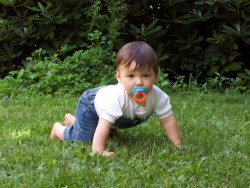
The presentation will address questions such as
- How can pesticides get into our bodies?
- What does research show about the health impacts of chemical pesticides?
- Doesn’t the EPA registration process protect us from unsafe chemical pesticides?
- What about very low-dose exposures to chemical pesticides?
- Are there alternative solutions to using chemical pesticides that are effective?
- What is the relationship between GMO products and pesticides?
Takeaways and opportunities for action:
- Beyond Pesticides' list of 30 common toxins in lawn care
- Dr. Porter’s article on the impact of lawn chemicals on learning abilities
- American Academy of Pediatrics notice to pediatricians to alert their patients to the dangers of toxic exposure
- Petition for local regulation of pesticide use
- Food & Water Watch Petition for GMO labeling in Illinois
- Sign-up for a group that will continue work on this issue in the area
Resources on this topic:
Beyond Pesticides: http://www.beyondpesticides.org/
Midwest Pesticide Action Center: http://midwestpesticideaction.org/
“The Big Switch: Transitioning to a Native Plant Garden” - June 22, 2:30pm
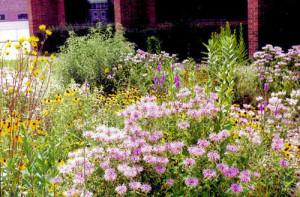 Kelsay Shaw will present “The Big Switch: Transitioning to a Native Plant Garden” on Sunday, June 22, from 2:30 to 4:30 p.m. at the Dominican University Priory, Room 259, located at 7200 W. Division, in River Forest (corner of Division and Harlem). This free program is presented by West Cook Wild Ones.
Kelsay Shaw is a botanist and sales consultant at the Possibility Place. He has a B.S. in botany from Eastern Illinois University and has been doing work in the industry for the past 17 years. He has taught classes on native plants and their uses in landscaping, as well as consulting on larger projects for some of their clients.
Kelsay Shaw will present “The Big Switch: Transitioning to a Native Plant Garden” on Sunday, June 22, from 2:30 to 4:30 p.m. at the Dominican University Priory, Room 259, located at 7200 W. Division, in River Forest (corner of Division and Harlem). This free program is presented by West Cook Wild Ones.
Kelsay Shaw is a botanist and sales consultant at the Possibility Place. He has a B.S. in botany from Eastern Illinois University and has been doing work in the industry for the past 17 years. He has taught classes on native plants and their uses in landscaping, as well as consulting on larger projects for some of their clients.
For more information about the West Cook Wild Ones membership and activities, check out their web site.
Are low level pesticides and other common chemicals safe?
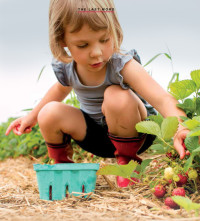 "If we are going to live so intimately with these chemicals -- eating and drinking them into the very marrow of our bones -- we had better know something about their nature and their power." -- Rachel Carson, Silent Spring
"If we are going to live so intimately with these chemicals -- eating and drinking them into the very marrow of our bones -- we had better know something about their nature and their power." -- Rachel Carson, Silent Spring
You are invited to a talk by Dr Warren Porter, professor of Biology and Environmental Toxicology. He is also an invited affiliate faculty member of Engineering Physics at the University of Wisconsin, Madison. Dr Porter will speak on the biological effects of low level pesticide mixtures and other common chemical exposures.
See related article: The Toxic Brew in our Yards, by Diane Lewis, Sunday, New Your Times Review, Opinion, May 10, 2014
Monday, June 16th, 2014, at 7:00pm, Oak Park Main Library, Oak Park, IL, 834 Lake Street, Veteran's Room. For more information contact Peggy McGrath, 708-383-3591.
Parking: Enter the Library parking lot off of Lake Street. Limited street parking is available on Lake Street and another parking lot is one block south of the library, just East of Oak Park Avenue, at the Green Line "El" train stop. Enter off of North Blvd.
Green Living: Break Your Bag Habit
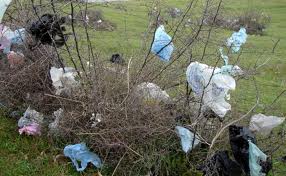 If you've driven down the Eisenhower Expressway recently, you know where I'm going with this. After the snow melted, six months of buried trash was suddenly exposed all along the highway. And it's the bags, fluttering in the wind, skittering across the lanes that grab attention and demonstrate their own polluting wastefulness.
If you've driven down the Eisenhower Expressway recently, you know where I'm going with this. After the snow melted, six months of buried trash was suddenly exposed all along the highway. And it's the bags, fluttering in the wind, skittering across the lanes that grab attention and demonstrate their own polluting wastefulness.
Hopefully the city will send out work crews soon. In the meantime, we want to encourage you to break your bag habit. Reason #1 is to help a good cause. We are happy to announce that the River Forest Whole Foods has chosen Green Community Connections as the recipient community group for their "One Dime at a Time," bring-your-own-bag program. Every time you shop there now through June 30, bring your own grocery bags and let the cashier know you'd like Whole Foods to donate 10 cents for each of your bags to Green Community Connections. It's all about building new habits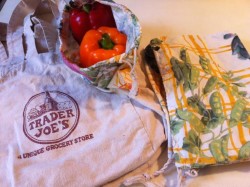
Eliminating single-use plastic bags from our lives is all about building new habits. Some people keep a stash of reusable bags in their cars. Others throw a few in their purse, coat pocket or bike bag. And for small trips, many people find it's easy to refuse a bag and carry a few items in their hands. On Saturday mornings, I write my grocery list, tuck it into the bag of bags I keep in my pantry, and hang them on my front door knob, where I'm sure I won't forget them.
Some of the misinformation promoted by the plastic industry claims that single use plastic bags are necessary because reusable bags are germy. I don't know about yours, but my grandparents did just fine without plastic bags. However, if you are hyper vigilant about germs, why not use washable cloth bags? Check out Etsy.com. Find a seamstress in your family or at the Oak Park Women's Exchange. If you enjoy estate sale or yard sale shopping, you can find a pretty old table cloth or sturdy sheets, instead of sewing new fabric. This past summer, I sewed myself a coordinated set of cloth produce bags from a vintage table cloth...I get compliments on them all the time.
Using humor to encourage conservation
Still, changing habits is challenging – even if it’s something we really want to do! Two of our One Earth Film Fest team members recently participated in the DC Environmental Film Festival and attended a session titled, “Can Comedy Encourage Conservation? “ Check out this quirky, fun short film about what it might take to motivate people to bring their own bag to the store as an example of the humorous films that were shared.
This video, produced in DC, supports a 2-cent tax on bags. Many other cities across the country have banned or taxed plastic bags. This spring, Chicago's city council is debating a full-out ban on bags. If you live within city limits, get involved in that effort. Contact your alderman to let him or her know you support the measure. Find Facebook pages, such as Bring Your Bag Chicago, to get the latest updates. Perhaps you may be moved to create a similar campaign in Oak Park, River Forest or in your town? Look for or start online petitions on sites like Change.org. Band with friends and attend a city council meeting or talk to community leaders.
REFUSE, reduce, reuse and recyle
We all know the environmental impact of single use plastic items, which are made from petroleum--a big strike right there. Even when waste haulers recycle plastic bags, as does Waste Management, Oak Park's residential waste hauler, the bags are only recycled once...turned mainly into plastic lumber used in decks and building trim, according to Earth911. Sure, the plastic will stay out of the landfill for 10, 20, 30 years or more, but since most plastic lumber is mixed with other materials, it can't be recycled again.
Refuse, Reduce, Reuse, Recycle. Since recycling is the last resort in an earth-friendly life, let's not settle so easily. Refuse those plastic bags, and start a new habit today!
Visit GCC's website for more information about waste reduction and recycling: http://www.greencommunityconnections.org/resources/waste-reduce-reuse-recycle/
Submitted by Laurie Casey
Oak Park Earth Fest 2014
The Village’s fifth annual celebration of green living — Earth Fest — is scheduled for 10 a.m. to 2 p.m., Sat., April 26, in the LEED® Gold-certified Public Works Center, 201 South Blvd. This year’s event will highlight green block party planning, eco-friendly businesses, local chefs and restaurants, games and activities for children, items for sale and entertainment. In addition, Recycle Alley is back by popular demand, with drop-off boxes for prescription glasses, hearing aids, rechargeable batteries, cell phones and old blue jeans. Start gathering your unwanted items now!The Village of Oak Park’s fifth annual celebration of green living — Earth Fest — is scheduled for 10 a.m. - 2 p.m., Sat., April 26, in the LEED Gold-certified Public Works Center, 201 South Blvd. For more information on Earth Fest 2014, call 708.660.1443 or e-mail maria@ghexperts.com. Information also is posted online at www.oak-park.us/earthfest.





